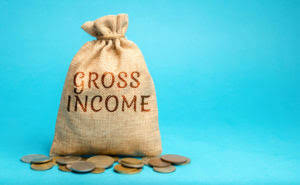
By using cash management software effectively, you can help ensure the financial success of your restaurant. With accurate financial data at your fingertips, you can make informed decisions about your business and focus on providing an exceptional dining experience for your customers. By breaking down your restaurant’s cash flow statement into these three sections, you can gain a better understanding of how money flows in and out of your business. This information can be used to make informed decisions about future investments, as well as to identify areas where cost-cutting measures may be needed. With the tips above, you’re well armed with the best strategies and tools to implement a strong restaurant finance management plan. By thoughtfully considering each element of your restaurant in this way, you’ll not only eliminate unnecessary spending and waste—you’ll also strengthen the food, service, and overall impact of your restaurant on the community.
- Nory’s restaurant management software offers comprehensive features for tracking and analysing cash flow across multiple venues.
- This includes cash received from sales, as well as expenses such as rent, wages, and inventory purchases.
- An excellent way to improve the health of your cash flow is to optimize your inventory levels.
- You may be booked solid for reservations in December before the holiday break but completely dead in January when the celebrations have subsided.
- A modern restaurant POS allows you to easily pull reports on food costs, sales, vendor orders, and even labor costs.
It’s the act of monitoring, analyzing, and adjusting your business’s cash inflows and outflows. But when it comes to cash flow forecasting, it’s wise to err on the side of caution. Be conservative in your net income predictions and generous in your expense estimates. This can help you avoid finding yourself in a tight financial spot should things not go as planned. In this blog, we explore the ins and outs of cash flow forecasting and management in the restaurant industry. If this is the case for your restaurant, investing in an all-in-one, cash management solution may be worth it.
Restaurant Cash Flow Management 101: Top Tips for Restaurants
It also allows you to compare your budget to your actual numbers to determine where any discrepancies are arising from. The section on operating cash flow considers income and expenditure from a business’s day-to-day operations. This includes the value of a restaurant’s current inventory restaurant cash flow management holdings (the value of stock held i.e unsold/used food and drink), accounts receivable and payable, and the crucial net income figure. Once you have a handle on your restaurant’s cash flow forecasts, you can look at staggering payments so a number of them aren’t taken out at once.
You have a much closer understanding of your needs and can allocate costs of seasonal staff, stock and marketing in advance of busy times. It also gives you the flexibility to adapt during periods of slow business. Using a restaurant cash flow forecast, you can decide when is the right time to make a capital expenditure or predict when to cut back on expenses. For example, you might find that by hiring seasonal staff during the summer, you can reduce costs with a smaller, more efficient, year-round salaried staff. Cash flow in a multi-venue restaurant refers to the movement of money into and out of the business. It encompasses sales revenue, operating costs, staff wages, and other financial transactions.
Understanding a Restaurant Cash Flow Statement – TMD Accounting
Having a great staff and paying them well is an essential aspect of running a great restaurant—but leaving labor costs unchecked will tank your revenue. Consider the number of people you need on staff during each phase of the day to keep things running smoothly. While having too few people during a rush can be a detriment to the speed of service and overall customer experience, overstaffing can cause distraction among team members and reduce productivity. Financial issues can sneak up on you if you’re not consistently checking in and preparing for the unexpected—fire, flooding, or expensive repairs are common setbacks in the restaurant world. To prevent your business from being derailed by such a situation and prepare yourself for long-term financial health, it’s important that you get your finances in order before things get tough. Here’s everything you need to know to successfully manage your restaurant finances.

One way to improve cash flow, particularly during slow seasons, is to reallocate space and staff to special events. Offer up your restaurant to companies looking to host lunch ‘n’ learns, organizations planning networking or fundraising events, or host a creative event of your own, such as a wine tasting or cooking class. This content is for educational purposes only and should not be construed as professional advice of any type, such as financial, legal, tax, or accounting advice. This content does not necessarily state or reflect the views of Bluevine or its partners. Please consult with an expert if you need specific advice for your business.
New Best-Selling Books Every Entrepreneur Should Read to Improve Their Health and Wellness
How often you do cash drops may vary depending on how many customers you get each day of the week and how many of them pay in cash. Despite the prevalence of technology in our lives, cash remains a standard payment method for a meal out, whether it’s at a casual dining or quick-serve restaurant (QSR). However, as with any currency, cash often comes with a high liability; restaurants deal with unique challenges regarding cash policy and procedures.
- Foodics, MENA’s leading cloud-based restaurant management and payment tech provider, has unveiled its new financial management product suite at Foodics “Boundless”, the second annual product event.
- The figure must be adjusted with last year’s cash balance deducted as that was money made in the previous period.
- Some days will be slower than others, and in the busy times you’ll be making more profit.
- Just like you have a specific recipe for your signature dish, you need a clear recipe, or policy, for payments.
- However, relying too much on credit is a dangerous practice that can have a huge negative impact on cash flow.
- By closely monitoring this statement, you can pinpoint areas that negatively impact your cash flow and take corrective action.
What can be done to build business savings relates to your ability to spend business funds wisely. Most new restaurant owners are not aware of the important things that lead to business savings. Saving to increase cash will ultimately help improve your restaurant’s cash flow.
Make Quarterly Budgets
Find out how Integrated Cash Logistics CashSimple™ solution does more to manage your money. Katie is a former Content Marketing Specialist at TouchBistro where she writes about food and restaurant experiences. She doesn’t shy away from the finer things in life, but no matter how much success she continues to acquire, she stays true to her roots and still considers imitation crab as gourmet. If she isn’t writing, you can find her on a patio with friends and a pitcher of white wine sangria. This website is using a security service to protect itself from online attacks. There are several actions that could trigger this block including submitting a certain word or phrase, a SQL command or malformed data.
- The trick is to start turning a profit (any money that’s left over after accounting for all expenses) as soon and as sustainably as possible.
- Additionally, businesses often face delays in receiving payments from customers, which can further hinder cash flow.
- After you have a few months under your belt, you’ll see patterns in the projection that will help with accuracy on your staff scheduling and inventory purchases.
- It also allows you to compare your budget to your actual numbers to determine where any discrepancies are arising from.
- Disorganised books also make your tax responsibilities harder to meet.
- In an ideal scenario, you’d want your inflows to exceed your outflows, giving you a positive cash flow.
Offer a 2-for-1 promotion or an early bird special for people who live in the neighborhood. Look for ways to get the attention of diners by doubling down on marketing. Run a social media contest, invest in a new form of marketing you haven’t tried before (like print or radio?) or hire an agency to come up with a campaign. If business fluctuates in your restaurant, be imaginative to get your seats filled. Rates, credit lines, and terms may vary based on your creditworthiness and are subject to change.